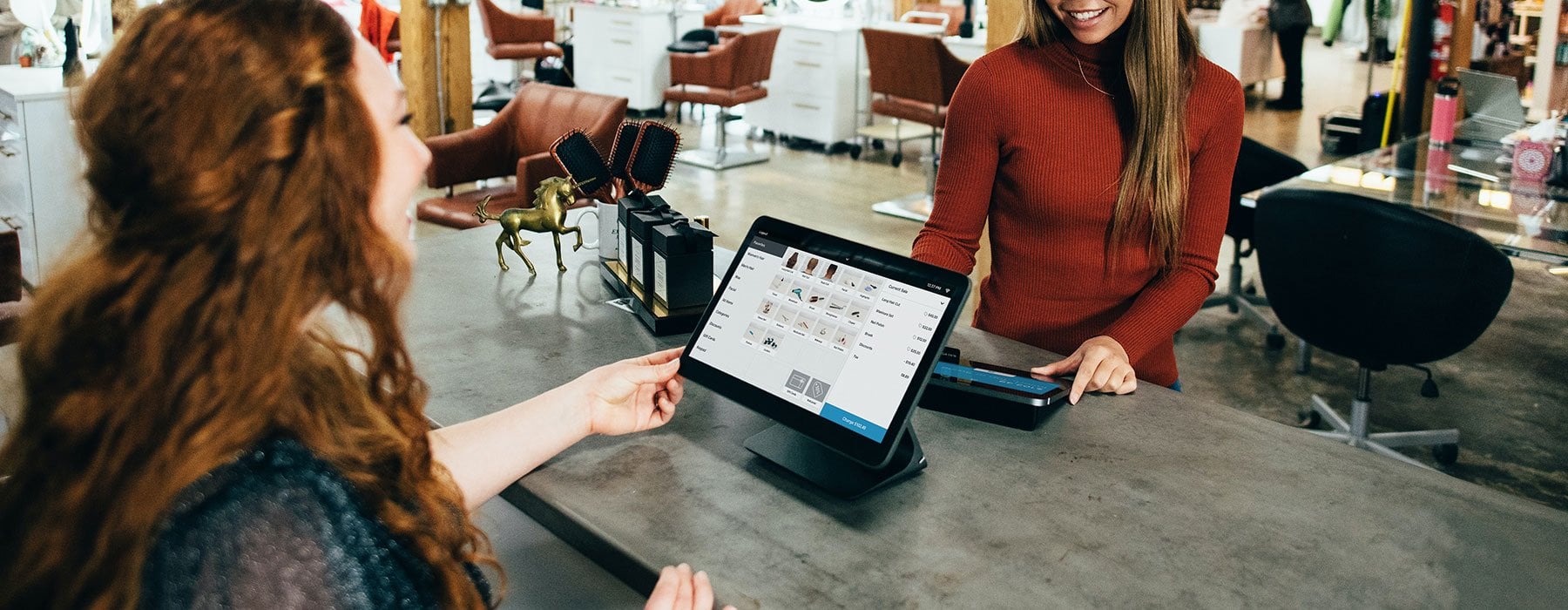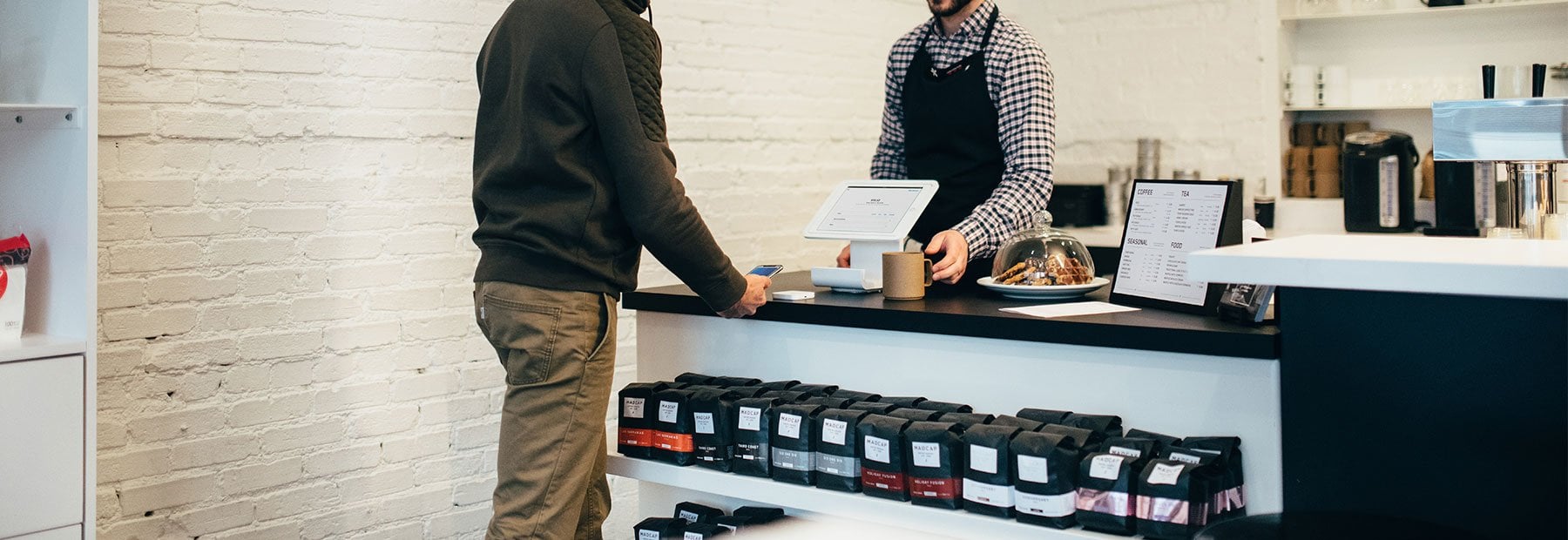
While getting footfall through your door is a necessity, converting these numbers to sales should be the driving force of your business. There are many creative ways to increase retail sales, without taking a revenue hit, caused by offering too many discounts. Sometimes, taking a step back, refreshing your store layout and delving into the mind of your customers can help you hit those KPI’s, and maintain a loyal customer base.
Here are our top 10 creative ways to increase retail sales:
1. Step up your customer service
Good customer service is the backbone of your business. Your employees are the people who are ‘doing the selling’, so if you want to increase your sales, you need to be highly efficient when choosing your staff. You want every member of your team to be passionate about the brand and know their products. Customers must be able to look to them for advice, assistance and guidance. They must be approachable, welcoming, and above all, friendly.

Customer service can make or break a consumer's experience and can make the difference between a sale, and revisit. Train your staff to create great buying experiences with their customers, teach them how to identify customer’s wants and needs, and help them match those to a selection of products. Role-playing with other staff members can be a great way to build confidence and polish off their sales skills.
While housekeeping jobs on the sales floor are important, set the expectation that customers come first, no matter what.
2. Make your customers feel safe
While in the midst of the COVID 19 pandemic, one of the best ways to drive traffic, and sales, is to instil confidence in your customers. It’s likely that potential consumers are concerned about their health and wellbeing during this unprecedented time. After long periods of isolation, there'll also be a number of people who feel overwhelmed in busy places. To make them feel at ease, you need to clearly communicate your health and safety measures using hygiene safety signs, social distancing protection, sneeze guards, and queuing barriers for social distancing.
Ensure your in-store employees are actively implementing social distancing and hygiene measures. Having a strong training procedure and active communication will help employees know exactly what to do in-store.
Use your channels to display and communicate your measures in place. Keep shoppers regularly updated via your website, email marketing, social media and your mobile app.
3. Click and Collect
Click-and-collect has been on the radar for a long time, but COVID 19 has increased its demand.
Offering this service will not only drive more footfall traffic, it’s been proven to increase sales too. Research has shown that around 45% of those who have opted for in-store pickups have purchased something else whilst in store.

Think about where you place your click-and-collect spot and create a multitude of eye-catching ‘add on’ points as they make their way through your store. It’s also a great idea to store some smaller products on risers, blocks or plinths on the click-and-collect desk. These perfect promotional tools create multi-tier displays that are highly effective in grabbing customers attention.
4. Rethink your sales targets
To be successful with anything, you need to set targets. One of the main ways to boost your retail revenue is setting sales targets.
Sales targets must be challenging, but of course, still achievable. If targets are too high, you could be at risk of de-motivating your staff. At the same time, if goals are too low, you aren’t pushing your staff and sales enough.
A fun and creative way to push sales targets with your team is to offer incentives, create product bingo cards, and set challenges.

A great way to set targets is to give your staff a ‘power product’, this power product could be anything, from face cream to fabric conditioner. The aim is to set your staff a challenge, of who can sell the most. This not only boosts team morale but gives them a clear instruction for the day.
Bingo cards with a selection of products that staff can cross-off as they go provide direction and incentive for the day or month.
5. Consider corporate social responsibility
To put it simply, doing good is good for business. Today, consumers are more likely to shop at stores associated with a good cause. There are several ways you can do this, including:
- Donating to charity.
- Being ethical with sourcing and manufacturing products.
- Supporting an initiative or community project.
- Participating in events that promote good causes.
- Hosting events for charities.
- Enforcing a recycling scheme.
- Investing in your workforce.

The Body Shop International is a great example of a brand that holds corporate social responsibility at its core. Campaigning for social change, they are a trusted global brand with decades of successful activism behind them. As well as providing ethically sustained products, they’ve influenced policy, attitudes and behaviours, including their bio-bridges programme with World Land Trust, and The Stop Trafficking of Children & Young People campaign.
6. Revamp in-store displays and visuals
It goes without saying, but people won’t buy unappealing products. It’s time to step up your game with some strong in-store visuals. Take these general guidelines and check out our Advice and Inspiration Hub for more in-depth tips and tricks.

- Create a focal point
Displays that are too distracting or busy will overwhelm your customers. Depending on the products you sell, mannequins and display cubes are great for elevating the eye.
- Make your displays multidimensional
Vary visual elements with height, colour and depth where possible. Merchandising systems, stacking baskets, display cubes, and risers can help you create a dynamic display.
- Make displays interactive
Showcase your products in action. Have staff using the products or allow shoppers to try them for themselves.
- Keep it neat
An organised space allows customers to find what they need faster, which aids the buying experience. Generally, customers are short on time, so if they can’t find what they need in an instant, they’re likely to leave empty-handed.
- Place your best products forward
Always place your best products in front of your store, regardless of the price. It shows what, as a brand, you’re capable of and works as a great conversation starter for meet and greet staff.
7. Build an authentic story
Being authentic sells. Consumers feel a real connection when brands show a real or vulnerable side, as it makes them more relatable.
Use a ‘know, like, trust’ model and share your story. This works well for small, independent businesses in particular. Customers would love to know their money is going towards helping pay for children’s dance lessons, or towards a great cause.

Training all staff to embody the brand story, so that they can articulate it to customers is a good start. Be sure to have a well-designed mission statement in a prominent place where customers can read and view too. A cable display system or counter top sign both make a good option for this.
8. Be customer-centric
Being customer-centric means really understanding your customers, and making them the centre focus of your initiatives and ideas.
Start by creating conversations with your customers, find out their likes, dislikes and what they value most. Introduce surveys, explore customers reviews, check social media comments, and study the cultures and habits of your target market.

Ikea, for example, performs so well as they are extremely customer-centric. They take time to study and find out about people's routines. According to Fortune reports, the brand completed a study on 8,292 to find out their consumers most time-consuming tasks in the morning. This helped Ikea gain valuable insights, which went on to form the basis of their next product design.
The most successful retailers are those who put the customer first, and by that, we don’t just mean offering good customer service. Retailers who delve deeper into their target market needs generally perform better.
9. Push cross-selling and add-ons
Upsells, cross-sales, add-on or impulse buys, whatever you want to call them, you need to push them as much as you can. This is where in-store retailers have the advantage over e-commerce, research by A.T. Kearney highlighted that 40% of consumers spend more money than planned in-store, in comparison to 25% who reported impulse spending online. This is because in-store retailers have more control over shopping experiences as they can control the layout, engage the senses and be influential in customers’ purchasing decisions. Here are a few tips you may want to consider:

- Increase visibility with merchandising and eye-catching signs.
- Be strategic with positioning (check-out area, or near best-sellers).
- Choose products wisely (add-ons are generally small and inexpensive).
- Train staff the art of suggestive selling.
- Hit the right psychological triggers
- Urgency: Limited-time promos.
- Value: Generous offers.
- Excitement or novelty: New, seasonal or original items.
10. Update update update
Having an engaging dynamic-looking store is just the start. In order to continue with successfully driven sales, you need to keep visuals as fresh as possible. This means keeping up to date with the seasons latest trends.
Don’t let any holiday season, occasion or local event pass you by, plan out your window displays and merchandising initiatives to the finest of details.
Placing relevant signage can also help drive sales, as the event gets closer, try setting up large A-boards or banner stands to remind customers to shop for the occasion.
Think outside the box too; there are several International days on the calendar that you may not have considered before:
24th January: International Day of Education.
20th February: World Day of Social Justice.
8th March: International Women’s Day.
2nd April: World Autism Awareness Day.
16th May: International Day of Light.
14th June: World Blood Donor Day.
30th July: International Day of Friendship.
12th August: International Youth Day.
5th September: International Day of Charity.
10th October: World Mental Health Day.
20th November: World Children’s Day.
10th December: Human Rights Day.
These are just a few tips you can implement to increase sales in your retail business. Some work as short-term pickups, while others are long-term tactics that you can integrate into your overall brand strategy. If you’d like some Advice and Inspiration from industry-leading experts, be sure to check out our hub where you’ll find in-depth articles full of useful information. Our sector hub covers everything from how to create an eye-catching window display, to how to make your workplace COVID secure.
Here at Displaysense, we stock a broad array of display and merchandising to help increase retail sales, from POS to merchandising display accessories. Our products provide an easier shopping experience for your customers. You can also explore a range of literature and information to draw attention to promotions or add-on products, as well as social distancing and hygiene products to adhere to the Government guidelines.